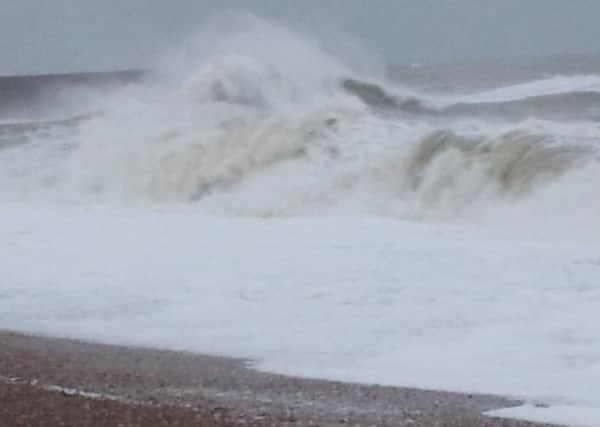Beach foam indicates'˜deterioration' at sea


Biologist Stephen Savage said recent stormy weather had created dramatic waves and a huge quantity of sea foam, blown on to beaches along the south coast.
The worst was witnessed at Brighton, but readers confirmed there had also been sea foam on Shoreham Beach, near the sea wall.
Advertisement
Hide AdAdvertisement
Hide AdMr Savage said: “While the foam looked like an overspill from a washing machine, it can be a sign of deterioration of the marine environment, caused by an increase in nutrients called eutrophication.”
Gill Barker, of Joseph Walk, Shoreham Beach, sent in a selection of photographs taken on Sunday, October 26.
“It looks like a bit like a washing machine cycle in the sea,” she said.
She confirmed she had seen sea foam next to the harbour wall, on the beach side.
Advertisement
Hide AdAdvertisement
Hide AdCyril Crouch, who also sent in photographs to the Herald, said he and his wife had both seen sea foam on the beach and in the wind, by the Church of the Good Shepherd, in Kings Walk.
Mr Savage, education co-ordinator at Shoreham Beach Local Nature Reserve, said with the wind blowing south west to westerly, he would expect the foam to gather against the sea wall.
At Brighton, foam coated the beach in a white blanket and people could be seen playing in it.
Mr Savage said it was not harmful to humans but the foam was an indication of remnants of decaying and dead algae, stirred up by the waves and the wind.
Advertisement
Hide AdAdvertisement
Hide Ad“While nutrients are vitally essential for the marine environment, it is thought this natural enrichment is often dramatically increased by human activities.
“The most common nutrients causing eutrophication are nitrogen and phosphorus and these enter rivers and the ocean from water run-off from agricultural land from industry and, from households, including phosphorus-based detergents.”
Mr Savage added algae was a vital part of marine food webs and it needed nutrients to grow but when these levels were too high, it could bloom and multiply to a level beyond the norm.
“The water is not polluted in the normal sense of the word but it yet another pressure for the marine environment to cope with.”